Computer Program to Track Household Expenses and Income
Best personal finance software of 2021
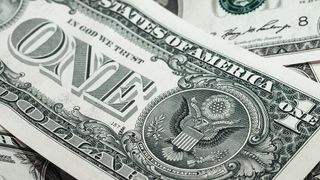
The best personal finance software makes financial planning easier and simpler to manage, from receipts and payments, to income and outcome.
Personal financial management doesn't have to be about receipts and spreadsheets. You can simplify the whole process using easy to use software. Software records are usually easy to save and backup, either to your hard drive or to a cloud storage service, making it harder to lose your progress.
Basic financial planning software simply provides an easy portal for managing your finances, but some of the more advanced ones can help with reducing debt, managing budgets, or even provide finance advice as an additional service.
We'll therefore look at the best personal finance software out there and show you the standout features of each one so that you can get a better idea of which would be best for you.
If you're looking to keep your business books with a bit more detail, check out our guides to the best accounting software for small business and best tax software.
Here then are the best personal finance software platforms currently available and, underneath those, the best free personal finance software.
Best personal finance software of 2021
Best personal finance software of 2021
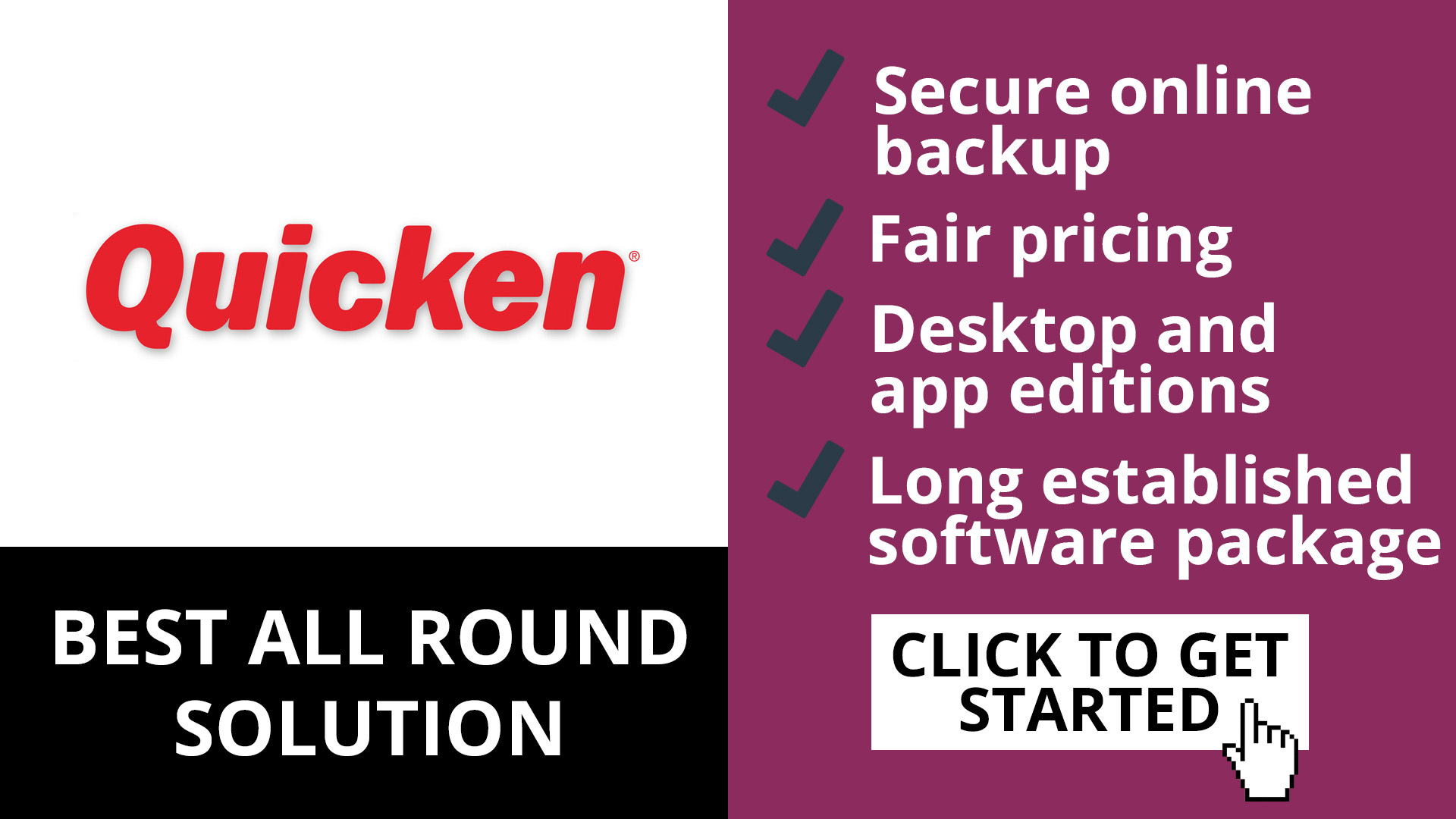
Best all round personal finance package
Reasons to buy
+Fair pricing +Secure online backup +Desktop and app
Reasons to avoid
-Slender app versions -Rivals come cheaper
Quicken is a long-established tool for managing personal accounts, and while its reputation was built on a desktop version, it's now available to run as an app on your mobile devices.
Quicken offers a good range of financial reporting tools. These are set around a few different areas, namely budgeting, bills, accounts, and even investments. For budgeting, it offers you a chance to input your purchases and income so you can compare them both together to get a better idea of how much you are spending compared to how much you are earning.
In terms of bills, you can also see which utilities and similar you are constantly paying out to, and see both the amounts to be paid and how much money you have left over. For accounting purposes you can even bring your banking and credit card bills together in one place so that you have a very clear idea indeed of how much you're paying out. This is especially handy as people easily underestimate how much regular small purchases can add to costs.
For investments it also offers the ability to track these, whether as part of your savings, investment portfolio, or 401k pension plan. This means you have a clear idea of how much your savings and investments are worth, though it's fair to say you shouldn't panic about short-term fluctuations in the stock market.
Altogether, Quicken brings together your budgeting, banking, and investment reporting into a single dashboard, which you can view from your desktop or even via your cell phone from the mobile app.

Best for personal and business money management
Reasons to buy
+Free trial +Easy installation
Reasons to avoid
-Limited features -Patchy useability
Just in case you need to be told explicitly what to do, along comes YNAB - short for You Need A Budget. Because, hey, if you don't want to spend every single penny you have and more, you absolutely do need one. And perhaps you have more money than you thought?
YNAB's primary mission, as you might expect, is to help you curb overspending and avoid living from paycheck to paycheck. Stick to the program, temper your spending appropriately, and eventually YNAB will see you spending last month's money rather than that which you've just earned.
It's quick to install, supports the majority of transaction information downloadable from banks, and appropriately configures itself for personal or small business use by changing its monetary categories depending on your needs.
If you get off track, YNAB – which is reasonably forgiving and understanding for a bit of software – will tell you what you need to do to get back to where you need to be. You'll have to make sacrifices, but if it's guidance you need, this sets itself apart from the likes of Quicken.

Best for tracking in multiple currencies
Reasons to buy
+30-day free trial +Supports multiple currencies
Reasons to avoid
-Can be a bit tricky to navigate -Needs their online banking subscription for syncing
BankTree is more than happy to support worldwide currencies, and in fact does a solid job if you're working simultaneously with more than one, offering balances in multiple currencies rather than rounding them off into a single total. It's also good for keeping track of everything, allowing you to scan receipts with its mobile app and import them later on.
It's not the prettiest software around, and it's slightly more awkward to use than many of its more refined cousins, although BankTree does produce very neat reports which you can break down by time, or by payee. It may be worth experimenting with the free trial before you choose to invest in this one.
The desktop software comes with one year of updates and support, though you are restricted to one PC and there is a charge for any additional PC you want to run the software on. There's also a browser-based version available.
Whichever version you opt for, there's a 30 day free trial available, so you can try before you buy to get an idea if BankTree will work for you.
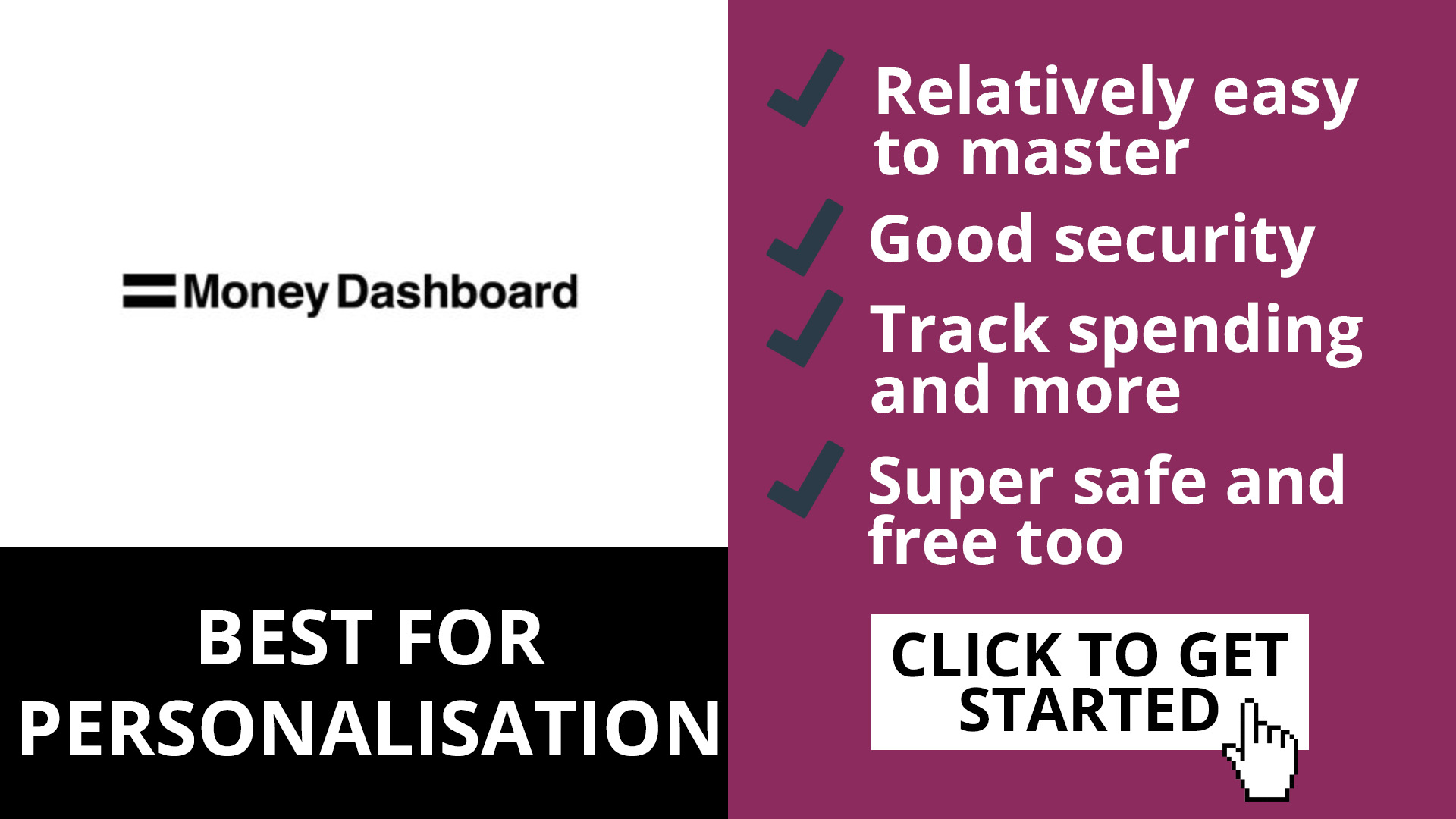
Best for personalized tags that make budgeting easier
Reasons to buy
+Free +High security +Easy to use
The Money Dashboard iOS/Android app doesn't try to reinvent the banking world or offer anything truly ground-breaking, but it is perhaps one of the most useful money management tools out there. Hook up every one of your UK bank and credit card accounts and you'll be able to see each of your balances in a single place with a single login. That in itself is enough for us to recommend it.
But there's more – Money Dashboard will track your spending, offering you an overall pie chart depicting your spending on loans, consumables, transport and the like. There's an at-a-glance overall balance, showing exactly how much money you have available across all of your accounts, and you can compare this to the previous month's figure to show how well you've been managing your funds. That's a great motivator.
It's super-safe, too: Money Dashboard locks down your login with an equivalent level of security to that of your bank, and it's completely read-only – your money isn't going anywhere.
There are apps available for Android and iOS, and surprisingly both are free to use.

Best money management for investors
Reasons to buy
+90-day money-back guarantee +Strong reporting features
Reasons to avoid
-No Android app -Lacking budget alerts
Made primarily for Mac users (but also out on Windows and Linux), Moneydance is a desktop money management package with a very neat single-window interface. Load it up and you'll get an instant view of your finances, upcoming bills, recent expenses and more. Click an item in the left hand sidebar and the main content changes to reflect it.
Its reporting features are quite strong if not spectacular to look at, and one of Moneydance's most useful sections is its account register. If you're old-school and once managed a cheque book, this operates on a very similar principle. There's also an iOS app for logging transactions on the go, which later syncs with the software on your desktop.
Unfortunately for UK users, Moneydance doesn't support the connection protocols used by UK banks, so you'll need to download your transaction history manually to keep on top of it and revert to your bank's own app to move money around. US users, however, are well covered.
The plan offered applies per household rather than per computer, which means that you are licensed to run it on multiple desktops at home. While no free trial is advertised, a 90-day money-back guarantee is.
How to choose personal finance software
How to choose personal finance software
Picking which personal finance software package to use is pretty straightforward. The main thing is to consider what you'll need it for, and how much you'll be using it. After all, there's little point in purchasing a premium personal finance package if it has got lots of features you'll never use.
If you have reasonably basic budgeting needs to cater for, such as managing personal finances along with tracking your spending, then keep it simple. the great thing with many packages is that they can be configured to work as much or as little as you need them to.
For example, you may be a little disorganised when it comes to budgeting, so having software that can help with setting goals can be really useful. Setting up your personal finance package to assist with reach goals, and ensuring it lets you know if you're slipping behind schedule can be invaluable.
If you're fairly good with your money and feel confident about how you manage cash then it may be that you'll want a more sophisticated personal finance package. Some of the more advanced options allow you to take on investments, offering a sophisticated range of tools for making your money work more efficiently.
Best free personal finance software
Best free personal finance software

Best for managing personal finances on the go
Reasons to buy
+High level of encryption +Free version
Reasons to avoid
-Reporting options are limited -Thin on investment options
An online service that's not slathered in effects and colours, Buxfer does a good job of presenting your finances in a clean, professional manner. It cutely brags about the fact that it's currently helping its users manage over four trillion dollars in funds, so it's got a solid user base behind it.
You don't have to give Buxfer your exact banking details if you're uncomfortable doing so – you can opt for offline manual syncing with your bank account instead – but if you do trust it, there's a layer of high-level encryption to protect your data and the company is regularly audited.
We like its budgeting tools best of all – the visual reporting is very strong, and the fact that it doesn't force you into predefined categories and instead allows you to tag expenditures however you see fit means Buxfer should fit nicely into most people's banking lives.
The free version gets you five budgets, accounts and bill reminders, the Pilot version adds on automatic tagging and bank syncing, the Plus version gives you unlimited budgets, and the Pro version includes online payments, advanced forecasts and more besides. Get it all though with a Prime version.

Powerful finance software with handy reports to keep you on track
Reasons to buy
+Cross-platform +Imports data from other apps +Supports unlimited accounts
HomeBank will appeal if you work on multiple platforms, or don't use Windows by default. Available for Windows, macOS and Linux (there's also an Android app in development) HomeBank can be installed normally or as a portable app, and it makes the topic of personal finance easily accessible. If you've been using another program – such as Quicken or Microsoft Money – to manage your finances, you can import data to save having to start from scratch.
You can add an unlimited number of accounts to the program, and they can be linked to each other to allow for easy money transfers – it is all entirely dependent on manual editing, though. With enough data entered, it's possible to generate all manner of reports, including helpful predictive reports for car ownership and the like. Very much designed with the average person in mind, this is a personal finance app for people who hate personal finance apps.
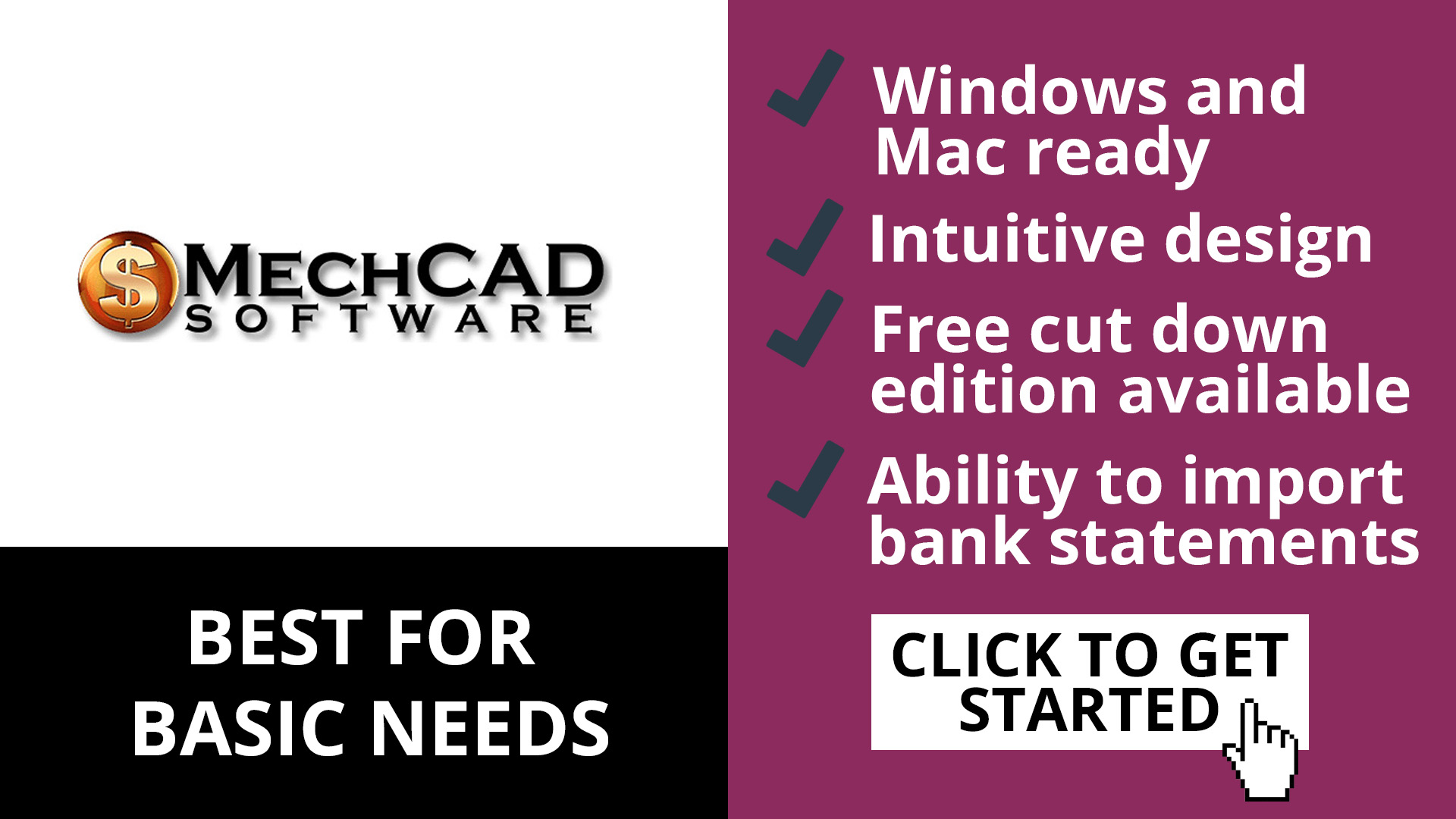
A great choice if your financial affairs are relatively straightforward
Reasons to buy
+Intuitive interface +Available for Windows and macOS
Reasons to avoid
-Only supports two accounts -Doesn't link to online accounts
Billing itself as an alternative to Quicken sets a high bar for AceMoney Lite, but it's a target it manages to reach, even in its free, cut-down iteration. There's only support for two accounts in AceMoney Lite, but this should be enough for many people. You can even use the program to keep track of your PayPal account.
Managing accounts in different currencies is no problem, but you'll have to enter data into this free personal finance software rather than having your transactions pulled in from your bank account. That said, if you download statements from your online bank account, these can then be imported to saved time with manual entry. AceMoney Lite also makes it easy to track your spending and investments, making it a reasonable financial tool for anyone looking to take control of their finances.

Flexible enough for home users and small businesses
Reasons to buy
+Imports data from other apps +Payroll for small businesses +Cross-platform
GnuCash is simple enough to be used for home finances, but flexible enough to be put to use by small businesses as well. While the software is easy to use, the fact that it's suitable for small business accounting is thanks to the inclusion of a number of extra features that you would not necessarily expect to find – support for payroll management and double-entry accounting, for instance.
Although relatively easy to use, this free personal finance software does really require some familiarity with accounting software, and it's simple to migrate from another program because you can import data in QIF and dOFX formats. Support for expense tracking makes this ideal software for preparing for tax season, and there are a huge number of reporting options to help you to make sense of your cashflow. The software is available for macOS, Windows and Linux, as well as Android, and it's highly recommended that you try out this great tool before you consider any of the paid-for alternatives.
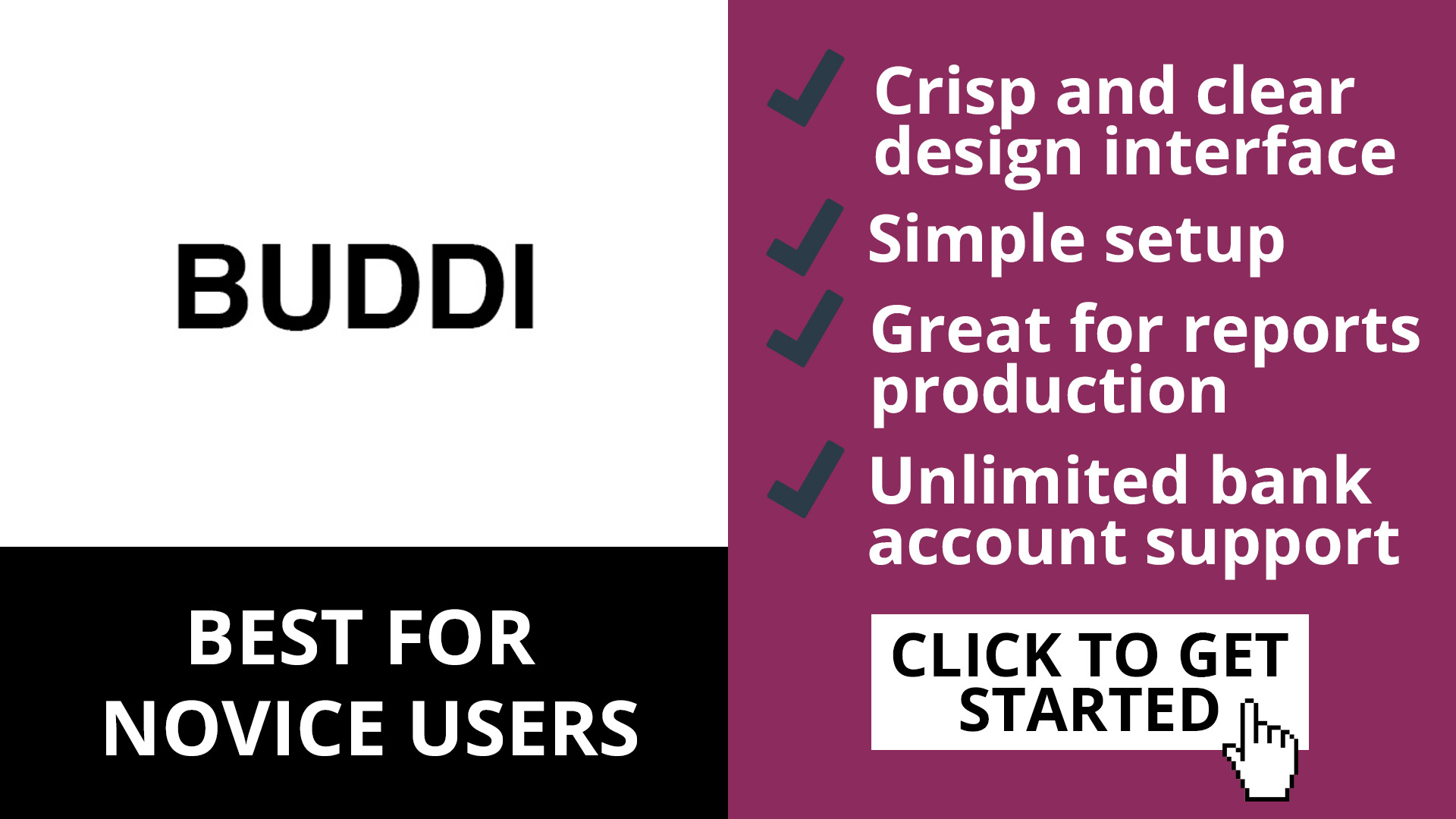
Clear and well designed – ideal if you're new to finance software
Reasons to buy
+Well designed interface +Excellent budgeting tools
Reasons to avoid
-Requires Java
Proving that free personal finance software doesn't have to be complicated, Buddi keeps things about as simple as they can be. In a matter of minutes, you can set up all of the accounts you need and start keeping track of your incomings and outgoings.
Money can be easily pulled from and moved between different accounts, and Buddi can generate all sort of reports about your spending and earnings broken down in a variety of ways. If you're looking to save money, the program can help you to stick to a budget and for anyone who is completely new to the concept of accounting, the Buddi website has a number of helpful guides to help get you started.
On the downside, Buddi requires you to have Java installed which is not going to be to everyone's liking, and the software itself has not been updated for a little while. Neither of these two factors are enough to stop us from recommending that you take a look at the program – it could well be just what you've been looking for.
Computer Program to Track Household Expenses and Income
Source: https://www.techradar.com/best/best-personal-finance-software

0 Response to "Computer Program to Track Household Expenses and Income"
Post a Comment